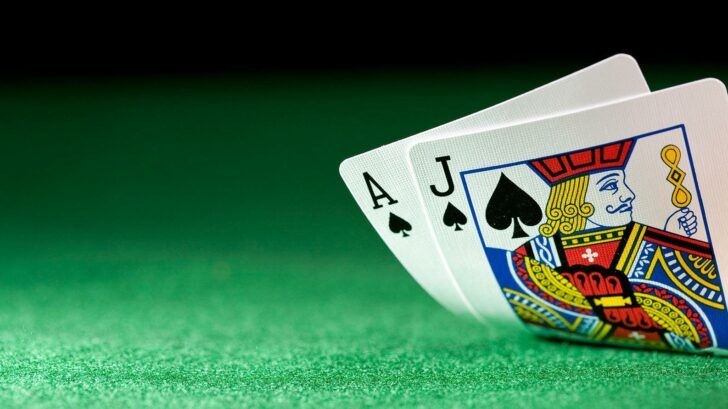Does Sex Boost The Gambling Urge?

Scientists investigate the link between sexual stimuli and financial risk taking by experimenting on undergraduates at Stanford.
That scientists feel the need to study sex and gambling quite so often probably speaks more to the desires of scientists than those of punters and lovers, and there is more than a little whiff of the obvious about some of the pontificating results they eventually publish. Do we really need to be told that sexual attraction can be a causal factor in risk taking? I doubt there’s a person reading this who hasn’t taken a risk in pursuit of sex, and if there is; Hello, your holiness, love your balcony work.
The men in the white coats over at Stanford have a bit of a track record on this one, leading the way with research into the nucleus accumbens and the nucleus insula. These are the two parts of the grey squidgy mass that is the human mind, the former being responsible for risk and gambling behaviours and the latter precisely the opposite, that the eggheads have been stimulating whilst the test subjects are hooked up to an MRI.
Sexual Imagery Stimulates Gambling Desire
• Link between gambling and sex news to scientists
• Undergrads shown naughty pics and then made to choose
• Lower financial risks taken after seeing spiders
Magnetic resonance imaging is one of those marvels of modern science that has revolutionized neuroscience by allowing a targeted observation of specific areas of the brain and their responses to activation by chosen, usually varying, stimuli. In essence this has eliminated the subjective query based response measurements of the past and replaced it with a direct quantifiable scale of response.
Of course it probably doesn’t take a multi-million dollar piece medical scientific equipment (try talking about this without using the phrase “brain scanner”) to figure out that when faced with sexual imagery men, particularly those of the heterosexual variety, have a tendency to make decisions that might not always reflect the best possible use of sensible judgment at that particular time. Advertisers discovered this in the early years of the 20th century and have used it to concoct smart strategies to sell us things ever since.
Undergraduates Exposed To Images And Tested
Now whilst Stanford’s earlier studies identified the areas of the mind that control risk and aversion to risk, it is their more recent work with controlling these areas, specifically attempting to create predictable responses from subjects, in terms of risk participation, when faced with unassociated stimuli of a positive or negative nature. The ability to gauge and record these responses has led to proof, rather than just common knowledge, that men are more likely to take risks in light of positive emotional stimuli.
“This is the first study to demonstrate that emotional stimuli can influence financial risk-taking” said lead study author Brian Knutson an assistant professor of psychology. “In the immediate aftermath of that stimulation men are consistently more likely to take bigger financial risks that they otherwise would.”
In order to demonstrate this, male undergraduates (the to-hand rat-in-a-maze of any educational institution) were shown two varieties of images in order to elicit the required emotional responses. Erotic images to provoke a positive one (they’re young men so that’s a no brainer) and snakes and spiders (things to which humans are instinctively adverse) to provide the negative one, directly after which, in either case, they were pressured to make a rapid decision concerning a financial risk.
The financial risk, in this case, was the decision as to whether to gamble 10 cents or 10 dollars on a game of chance in which there was always a fifty-fifty chance of winning (far better odds than one is likely to encounter in a Vegas blackjack tournament). What was seen as a result was that, consistently throughout, there was a direct correlation between the higher financial risk and thinking about sex while gaming.
Sexual Imagery Increases Risk Taking
“What we saw is that when they viewed the erotic pictures, the activation in their nucleus accumbens increased compared to the other stimuli, and also that they had increased activation in that region before choosing the high-risk gamble.” Knutson said, confirming that the sexual imagery had increased the degree to which financial risk would be taken by the subjects in the subsequent risk-evaluation tasking.
“After people had seen those erotic pictures, they tended to pick the high-risk gamble more often, especially if they had been picking the low-risk gamble before. The interesting finding from an economic standpoint is that these completely irrelevant stimuli, these pictures that have nothing to do with the gambles or the history of outcomes that people have experienced with these gambles, still influence behavior.”
Which won’t come as news to advertisers, politicians, or indeed casino owners. This study proves that rather than wasting time with pheromones in the air conditioning, or mystical patterning to the carpets, casinos have encouraged risky behaviour (more gambling) on the part of patrons by the far easier method of employing awfully attractive young ladies to work in their establishments.
Pretty girls handing you drinks as you play isn’t just good customer service, it’s good for the bottom line, and they know it. This use of sexual imagery extends into the cyber-realm and one is as likely to run into glamorous pictures of barely dressed ladies in a blackjack casino online as one is a hostess wearing very little in a physical casino in Vegas. Some sites even make this a focus of their gaming experience as in the case of casino Casinorgy.
“If you go to the casinos, people are wearing skimpy costumes, they’re giving you free alcohol, there are bells and lights and things like that, which don’t necessarily seem related to the odds of the gambling.” Said Knutson. “But these are cues that might activate brain regions that encourage risk-taking and therefore get people to gamble more.”




